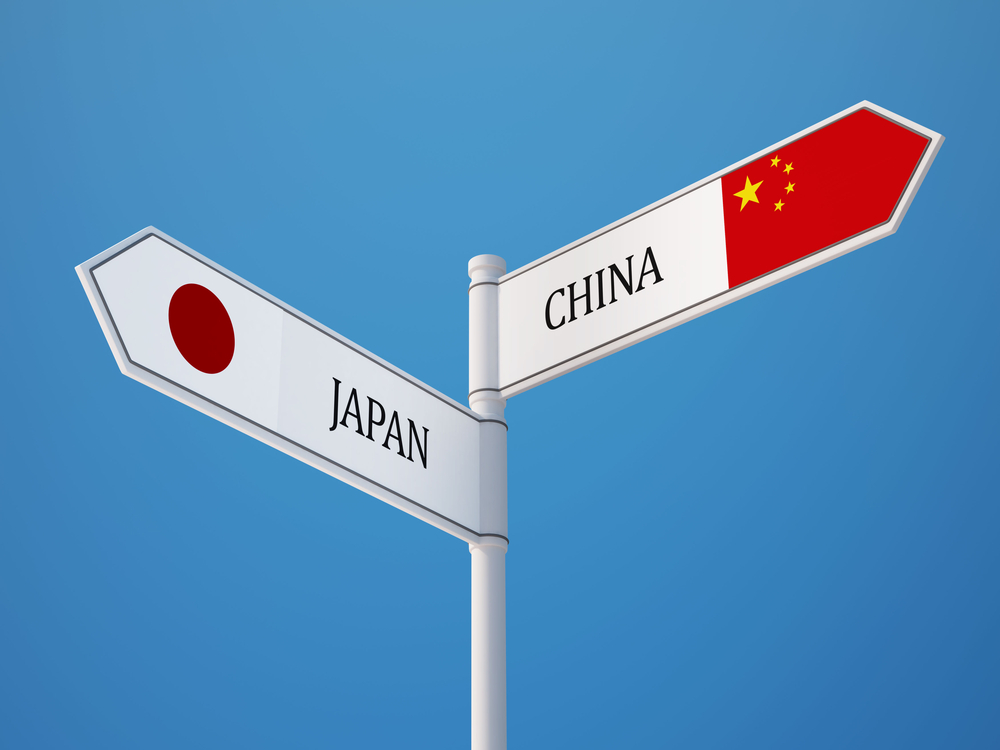Japan Balances Ties with China and the US

Please note that we are not authorised to provide any investment advice. The content on this page is for information purposes only.
There is no doubt that China is building up its military capabilities. Nor that Japanese Prime Minister Shinzo Abe played up the threat of China, which spends three times as much as Japan does on its national defence, as a justification for new security legislation in Japan. However, deeper scrutiny of this issue requires a broader perspective on China’s strategic intentions.
There is no doubt that China is building up its military capabilities. Nor that Japanese Prime Minister Shinzo Abe played up the threat of China, which spends three times as much as Japan does on its national defence, as a justification for new security legislation in Japan. However, deeper scrutiny of this issue requires a broader perspective on China’s strategic intentions.
Deng Xiaoping, China’s top leader in the 1980s, set forth the slogan of ‘hide and bide’. Deng meant that China should keep a low profile while building up its power and he ordered a close aide to start a naval development program.
The country has since consistently developed a strategy for increasing its power. China has achieved substantial progress in economic development and formulated a security policy under which the Communist Party pushes nationalism and the armed forces take a tough stance.
China’s intentions behind its maritime advances of recent years should be assessed in that context. While China’s maritime expansion is aimed at gaining a grip over marine resources in the South China Sea and ensuring free navigation in the East China Sea, it is the presence of the United States that weighs most heavily on China’s mind.
Washington has come up with a policy of ‘rebalancing’ toward Asia to keep Beijing in check. However, Chinese leadership under President Xi Jinping is hoping to wrest control of the South and East China Seas by sometime around 2020 and grow into a world power on par with the United States by mid-century. Beijing showing off its military power could be considered to be in line with that diplomatic strategy.
Abe cited the threat of China in justifying the security-related bills, which the Japanese Diet passed on 19 September 2015. A closer look into the Abe government’s defence policy reforms reveals that a lot of it is not addressing China’s military build-up. This seems to hint that Abe is pointing to the threat of China not so much in response to its expansionary strategy but as a means of expediency in helping to realise his pet policy of allowing Japan to exercise the right to collective self-defence.
China has so far responded with a restrained attitude, precisely because it is seeing through all the subterfuge. Beijing probably judges that stronger criticism of Japan would only give a more persuasive power to Abe’s argument.
Now that Abe’s security legislation has passed, allowing Japan to exercise limited forms of collective self-defence, Japan should ensure that in practice this remains only a possibility. The exercise of the right to collective self-defence would be best keep as a diplomatic bargaining chip for the future. This is because the United States remains far ahead of China in terms of military capabilities, and there is a deep-rooted argument in China that the Japan–US alliance poses a threat. Simply touting a stronger Japan–US alliance would allow Japan to achieve sufficient deterrence.
China would be likely to build up its military power with a vengeance if Japan were to indicate any possibility of teaming up with the United States and exercising the right to collective self-defence — or staging an attack — above and beyond merely strengthening the alliance. That would invite a security dilemma, whereby military build-up on one side fuels build-up on the other. Japan should not emphasise the threat of China any further.
It is essential, before everything else to set up a security framework that covers the entire East Asian region. One possibility could be to set up a forum for experts and officials from Japan, the United States and China to regularly discuss regional security concerns.
Developing a security policy that does not rely on military power alone will be no less important. Japan and China should seek a strategic separation of politics and the economy, forming solid connections through trade and personal interactions so that political tension may no longer lead directly to destabilised bilateral relations. Other countries could also adopt the same strategy toward China.
There are many domains where Japan and China could cooperate. China’s population is ageing rapidly because of the country’s (recently overturned) one-child policy. Building a better social security system has therefore emerged as a major domestic challenge. Environmental pollution is a serious problem. There is a need for a sustainable economic policy that will involve energy conservation and recycling.
That is exactly where Japan has an opening — an opportunity to provide China not only with its environmental technologies but also with all the systems and knowhow that come with them. The area of aged care also provides possibilities to adopt Japanese-style services and human resources development measures. Accumulating these and other steps of cooperation will help build mutual trust.
Xi’s leadership is seeking to strengthen cohesion through anti-corruption campaigns, while at the same time controlling information to put a gag on domestic society. But as private-sector exchanges flourish, as seen in the recent spending sprees by Chinese tourists visiting Japan, any attempts to portray Japan as the ‘bad guy’ will no longer convince the public. It is no longer as easy for China to play the anti-Japanese trump card to justify the rule of the Communist Party.
Japan must carefully evaluate China’s strategic intentions is republished with permission from East Asia Forum




